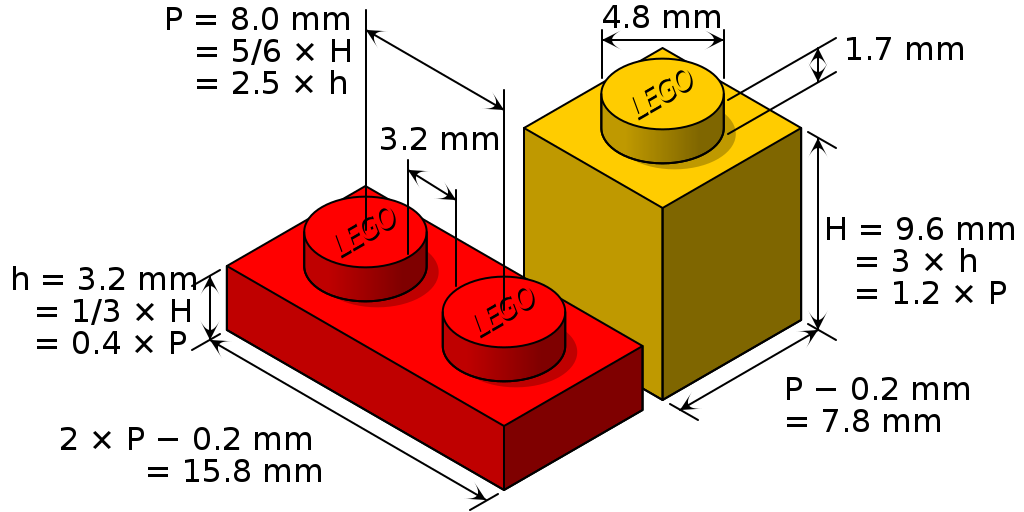‘The Little’ – Day 1

Thank goodness for calendars!!! Some dates are more important than others. But we still need to track them, share them, and remember them. Take for instance my birthday, __?__?__?__. Good to know, huh?? :)))))
The other day I was looking at my calendar, planning my week, staff meetings and calls to help my customers solve their PIA (Pain in the @%$) Jobs! Thinking through the next few weeks and what was ahead of me (and when I might be able to hit some golf balls . I noticed that the first day of Ramadan (based on a lunar calendar) Good Friday and Easter Sunday (based on the numeric calendar) was clearly marked on my March calendar. As I flipped through April, and May dates, it got me thinking about “calendars” – what’s the history behind all this. I went online and “Wow”, did I uncover a TON of information, all started by a scholarly monk some 1700 years ago named Dionysis Exiguus, best known for his creation of a Christian based calendar (using the designations B.C. and A.D.) that led to our modern-day Gregorian calendar. For Dionysis, today, March 25th became “Day 1”. I did my best to pick and choose the history details (be sure to click the links to dig deeper into the backstory). Special thanks to Wikipedia, newadvent.org, brittania.org, and encyclopedia.com for the info. Enjoy!
- Roman scholar and theologian Dionysius Exiguus (c. 465 A.D.-c. 530 A.D.) is best known for his creation of a calendar that led to the modern Gregorian calendar. From his calendar stem the designations “B.C.” and “A.D.” Dionysius championed the system that is still used today to determine the date of Easter, and his many translations and writings have influenced canon law and helped preserve early Church texts for study.
- Dionysius Exiguus, the man, is something of a mystery to modern scholars; Writing in Anno Domini: The Origins of the Christian Era, Georges Declercq argued that “the epithet ‘exiguus’ was adopted by Dionysius himself as a sign of intellectual humility, not because he was small of stature (‘the Short or the Little’).” Beyond this issue of nomenclature, the specific details of the early life and career of Dionysius have been lost over the centuries.
- Modern scholars do know that Dionysius originally came from Scythia—an area that in antiquity covered parts of present-day Russia, Ukraine, and Kazakhstan—where he was reputedly raised by a sect of Gothic monks before becoming a monk himself. A preface to one of his translations seems to indicate that Dionysius came from Scythia Minor, which today encompasses a portion of Romania that borders the Black Sea.
- Regardless of his place of origin, sometime around 496 Dionysius came to Rome; he was by that time already a well-known scholar who had been summoned by Pope Gelasius I to the city to organize the internal archives of the church “to compile a collection of texts of incontestable worth and authenticity.” Despite his origins, Dionysius was considered by contemporary Cassiodorus to be “a true Roman and thorough Catholic.”
- During his career, Dionysius worked in several fields of study. He translated many of the decrees issued by the Council of Nicaea, which created the first standard Christian doctrine; decrees by the Council of Constantinople, which created the first major revision of that doctrine; decrees by the First Council of Ephesus, which declared Mary to be the mother of God; and finally, decrees by the Council of Chalcedon, which established the difference between Jesus Christ the human and Jesus Christ the divine.
- Dionysius collected letters written by fourth-century Popes. These letters, together with his collections of council decrees, later served as important resources for the creators of canon, or church, law. He also translated a number of texts describing the lives of saints, as well as theological works that recount early doctrinal debates among different groups within the Church. The New Catholic Encyclopedia claimed that “Dionysius’s perfect knowledge of Greek and Latin is proved by his translations.”
- In addition to translating important Church texts, Dionysius himself was a theologian who wrote on the early history of the Catholic Church. His biography in Science and Its Times stated that “he is credited with writing a collection of 401 ecclesiastical canons … that would become important historical documents about the early years of Christianity.”
- According to the New Catholic Encyclopedia, “the entire work of Dionysius had but one purpose: the reconciliation of the Churches of the Orient and the West.” At the time of Dionysius, Christian doctrine was not yet standardized; the Christian world had divided into eastern and western branches due to disagreements on doctrinal matters.
- One of Dionysius’s efforts to reunite the divided Church related to the calculation of the dates of Easter, the most important Christian feast day, on which believers celebrate the resurrection of Jesus Christ from the dead. At the time, two methods competed for supremacy. One, the Alexandrine rule, had been created by the Council of Nicaea in 325. The other, used by the Church authorities in Rome at the time of Dionysius, declared that Easter must fall between March 25 and April 21 and relied on an 84-year cycle.
- Dionysius was also trained as a mathematician and an astronomer too (this guy rocks!!), and these skills surely helped him as he conducted studies into the calculation of dates. His work with the calendar stemmed from a request from Pope John I in 525 to extend the existing Easter tables for an additional 95 years. To do this, Dionysius chose to employ the Alexandrian method and to base his calculation on the Easter tables of St. Cyril, who had used the Alexandrian method, rather than those of Victorious of Aquitaine, which employed the cycle then endorsed by the Roman Church.
- A number of bishops asked Dionysius to explain this decision, and Dionysius responded to this request in the preface to his Book on Easter Reckoning, as quoted by Declercq. Declercq noted that Dionysius believed firmly that the Council of Nicaea endorsed the Alexandrian method, and summarized Dionysius’s explanation of the criteria of that method thus: “The beginning of the first lunar month, Nisan, from 8 March to 5 April inclusive; the lunar limits 15-21 for Easter Sunday; the theory of the spring equinox on 21 March as the earliest possible date for the Paschal [spring] or 14th moon; the calendar limits for the Paschal full moon (21 March to 18 April) and those for the festival of Easter itself (22 March to 25 April).” (we’ll be having a test on Monday…”)
- These criteria dictated that Easter would occur on the first Sunday following the 14th day of the lunar cycle—the full moon—that falls on or after the spring equinox. Despite the controversy caused by Dionysius’s use of this method, his tables noting the dates of Easter for the years 532-626 stood. (Western Christianity still calculates the date of Easter using this method, showing the lasting impact of Dionysius’s work).
- In the course of determining the date of Easter, Dionysius also created the Christian Era calendar, commonly used today and recognizable by its B.C./A.D. (“Before Christ”/“Anno Domini”) designations. Instead of relying on the modern Gregorian calendar, people of Dionysius’s time determined the year using the Julian calendar. This calendar was created by famed Roman statesman Julius Caesar in an attempt to correct the highly inaccurate Roman calendar of his day. This calendar numbered years commencing from either the foundation of the city in Rome, or from the first year of the reign of the Roman Emperor Diocletian.
- The Diocletian dating system was at the fore in the era of Dionysius. Preferring not to memorialize Diocletian, who had been a somewhat tyrannical emperor and had persecuted Christians, by basing the calendar upon his reign, Dionysius decided to renumber the years. Dionysius is quoted as stating that he wished to date the year “from the Incarnation of our Lord Jesus Christ, in order that the beginning of our hope should be better known to us and the cause of our recovery, that is the Passion of our Redeemer, should shine forth more clearly.”
- Dionysius thus renumbered the years beginning with the incarnation of Jesus Christ, beginning with the year 1 as the Roman numbering system had no way to indicate a zero. This meant that his Easter tables began with the year 532, instituting the Christian Era (also called the Incarnation Era) still used for reckoning the number of the year.
- The legacy of Dionysius Exiguus is evident throughout the world. His dating system, incorporated into the standard Gregorian calendar, is the most common reckoning of the year around the globe. The Alexandrian rule of calculating the date of Easter, introduced by Dionysius, remains the method used by Western Christianity to set this feast day. (nice job!)
- If interested, learn more online at: “Dionysius Exiguus,” Catholic Encyclopedia, (November 26, 2007).
::::::::::::::::::::::::::::::::::::::::::::::::::::::::::::::::::::::::::::::::::::::::::
DO YOU LIKE CONTESTS?
Me, too.
As you may know the Kowalski Heat Treating logo finds its way
into the visuals of my Friday posts.
I. Love. My. Logo.
One week there could be three logos.
The next week there could be 15 logos.
And sometimes the logo is very small or just a partial logo showing.
But there are always logos in some of the pictures.
So, I challenge you, my beloved readers, to count them and send me a
quick email with the total number of logos in the Friday post.
On the following Tuesday I’ll pick a winner from the correct answers
and send that lucky person some great KHT swag.
So, start counting and good luck!
Oh, and the logos at the very top header don’t count.
Got it? Good. :-))))
Have fun!!
::::::::::::::::::::::::::::::::::::::::::::::::::::::::::::::::::::::::::::::::::::::::::













